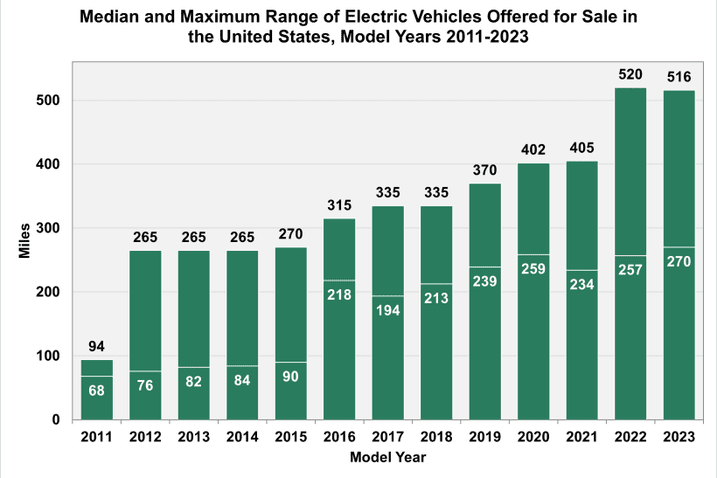An electric car’s range is defined as how many miles an EV can drive on a full charge. It’s a simple metric but arguably one of the most important to consider while shopping for an electric car. After all, the more range an EV has, the less often you have to stop to charge.
What affects EV range?
EVs and plug-in hybrid electric vehicles (PHEVs) have a finite range that is most influenced by the size of their battery. Like the size of a gas car’s tank, it is the leading factor influencing EV range — bigger battery equals more driving equals less frequent charging.
However, it is not quite as straightforward as that. Your driving style or the vehicle's drivetrain and number of electric motors, or local factors like topography and ambient temperature, can all affect a vehicle's range. Even an EV’s weight can affect how far it can go on a charge.
Maybe you've heard about how cold weather can affect range, but real degradation in range really only occurs in below-freezing temperatures. And even then, the worst most drivers will see is a 30% or so drop. This is due largely to the temperature of an EV’s batteries, and many EVs have a preconditioning mode that will heat both the batteries and the cabin on a chilly day. Preconditioning a battery helps it operate more efficiently.
The EV's powertrain is another factor that affects range. Let's look at the BMW i5 as an example. The base BMW i5 eDrive40 has one electric motor on the rear axle, driving its rear wheels. The performance-oriented i5 M60, meanwhile, has two motors, one on each axle. Predictably, the M60 offers higher power output because of its additional electric motor, but lower electric range. According to the Edmunds EV Range Test, the BMW i5 eDrive40 went 321 miles on a full charge, while the i5 M60 traveled 264 miles.
Regardless of the type of EV, its number of motors, or even its battery size, one thing is always a constant measure of an electric car’s ability to cover miles: you. Your individual driving style will always influence a car’s efficiency. Step on the throttle at every opportunity and more energy gets burned. Drive more conservatively, coasting and using an EV’s regenerative braking capabilities, and the car will operate more efficiently. Some vehicles also offer efficiency-focused drive modes that can help extend range.
EV range figures are getting better
Automakers have only been producing hybrids and electric vehicles en masse for a few decades, and there is still much to learn about battery construction, aerodynamics and charging, all of which play a part in a car's overall range. In just the last few years, advances in battery cell density have allowed us to squeeze more range out of smaller batteries, for example.


 by
by  edited by
edited by